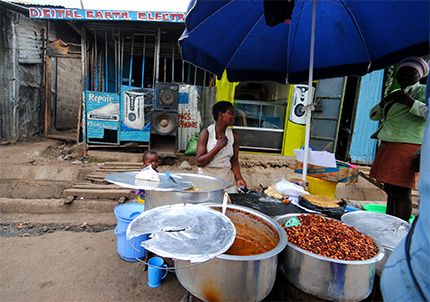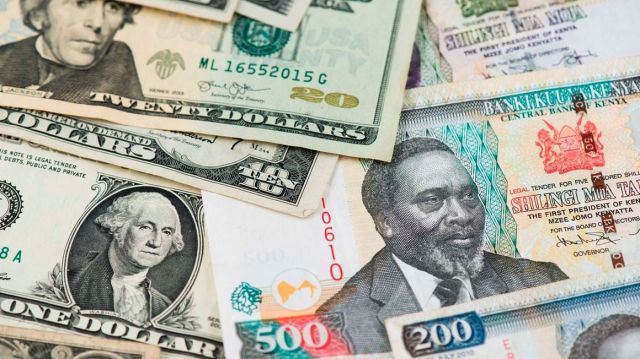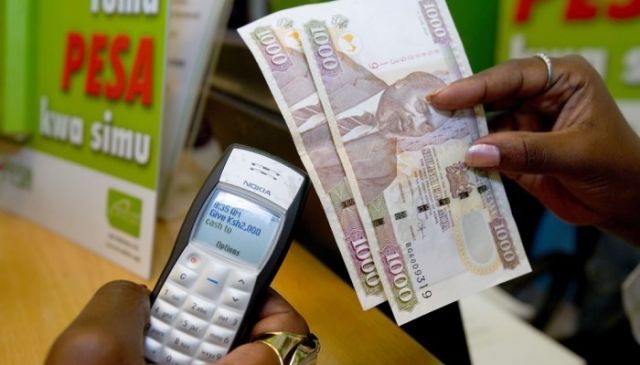
KENYA
02-05-2017 by redazione

There is a restaurant on Mombasa Road, just outside Nairobi, which is a paradoxical show.
It's an old grungy structure in macute and sheet metal.
Its walls and roof are black soot.
It is one of those family-run taverns where you would expect to find unskilled and occasional workers in the Industrial Area, who consume in their silence a frugal meal of chapati and beans.
Instead, with great surprise, she is full of customers dressed all over the place.
Men and women in dresses that are also sought after, which, with sophistication, predispose to sumptuous chicken and ugali dishes while discussing the management policy of their company.
Next to the chicken and polenta dish of one of these ladies there is a very expensive smartphone.
And tied like a ring to the index finger of his left hand dangles the key of a car, symbol of his economic status.
Here is a classic is a member of the so-called "rampant" middle class of Kenya, eating in a low-level restaurant.
Many of them will tell you that they are attracted to this place for the goodness of the dishes, who simply love "mama-kibanda" more than the larger and modern trattorias.
But if you dig deeply, many of them will confess that their pockets are not large enough and they can not afford a decent meal somewhere else.
In fact, there are many attractive restaurants in the nearby NextGen Mall, always along Mombasa Road.
They serve exotic dishes, Ethiopian and Chinese cuisine, popular middle class dishes with some regard to all foreign attractions.
There are also Burger King's fast-food and Domino's and Arsham chefs featuring Indian and Chinese with the cover.
And not far from this mall there is also an American original fast food, the KFC.
But a decent meal in these restaurants costs at least 500 shillings.
If you eat here for lunch 20 days a month, it would mean spending at least 10,000 shillings, not counting dinner. On the other hand, chicken and ugs in the taverns at the edge of the road, which is often not less good, costs only 160 shillings, for a total of 3,200 at the end of the month.
A cost-effective expense for the middle-class individual, who according to the latest report of the Institute of Economics (IEA) brings home a salary ranging between 76,392 and 102,429 shillings.
The IEA report titled "The Middle Class in the Formal Industry in Kenya" has revealed that there are approximately 272,569 middle-class wage-earners in Kenya, while 74,337 more employees are in an even higher class.
Then there are the bourgeois aspirants, which make up the huge figure of 2.13 million people, who at the end of the month bring home less than 49,000 shillings.
For the World Bank, the daily incomes of an individual or a family of medium size vary between $ 10 and $ 50 per person per day. This leads to an average income of 27,000 shillings, which can also reach 140,000 per month.
The African Development Bank (AFDB) defines the middle class as anyone spending between $ 2 and $ 20 a day, placing the middle class at 34 percent of the African population, or nearly 350 million people.
"Even if you look at the definition of the middle class as for AfDB, I do not think someone who earns 2000 shillings a day and has a family and children can really save on savings," says Anzetse Were, economist of development .
It was observed that most of these people's income goes to the poorest relatives, leaving them with little liquid availability. "I would call them as a poor elite and not really the middle class."
According to AfDB, middle-class families "live in larger and more permanent homes equipped with modern amenities, they are owners of large durable household goods such as refrigerators, telephones and cars, have wage jobs and numerous families.
"In fact, most Kenyans have failed to fight the lure of average costly living as the people who eat at the street kiosk. Most of them have poured money into luxury goods that are located in the malls full Like mushrooms, bought new cars and bought used homes to keep pace with rampant. But in a volatile economic environment like Kenya where a job is not guaranteed, the effect has been devastating.
"The middle class is more a way of life and people have cultivated expectations to live beyond their means," says economist Scholastica Odhiambo, for which a middle class person in Kenya tends to live in a relatively comfortable home with Good hygiene, better roads and where transportation is easy to find.
However, most Kenyans have tried to adapt to the description of the Hollywood middle class, characterized by house ownership, car ownership, and children in expensive private schools. This ate in their disposable income, leaving them in a precarious state.
Kenya's middle class families have vigorously dreamed of having a car and a home with disastrous effects.
The most naive Kenyans have also lost millions of shillings after being fooled by bogus brokers who have promised to sell them cheap homes.
In October of 2015, a company known as Simple Homes who adopted a model called "Pay rent, becomes owner", has been successful, inflaming the hopes of hundreds of thousands of Kenyans from the so-called middle class who could not afford to buy A home due to high reference or high rates.
At least 500 million shillings have volatilized because they have gone downhill, as "Simple Homes" turned out to be another scam, with its media scandal.
The big car ownership rush has added charges and hence debts to most middle-class families.
"Since 2003, access to credit has been calmed down. Today you can get a loan even if you have a salary of just 15,000 shillings," explains Odhiambo, adding that unfortunately, people have already realized that loans are a solution In the short term they can not support.
According to a report by the Financial Sector Deepening (FSD), with the expansion of banking branches, 73% of the population is tied to a financial center located not more than three miles from their home.
In 2015, financial agents were already 68,000, with a densification of offices to allow convenient access to most Kenyans.
"Banking loan models seem to be strongly linked to the growth of the middle class - the FSD report explains - with a growth in the loan largely focused on consumer loan awards (in particular the" payslip "loan) and the Real estate markets ".
The average class then used the loan money to buy consumer goods such as cars and household appliances while in other things they live like those who have to earn the least amount of day to day. As a result, motor vehicle imports grew six times from 14,524 units in 2001 to 85,063 units in 2016, as the absorption of Kenyan cars through readily obtained loans rose dramatically, according to official figures.
Likewise, commercial loans rose sharply, from 1.7 trillion shillings to 8.1.
Unlike years ago, when a car's property was a privilege of a few wealthy people, today a vehicle for everyone is normal but without actually allowing it.
Maybe, then, people eating at the street kiosk is not the middle class.
Perhaps, a slum dweller is more middle class than these people.
Politicians have pushed for Kenya to have a middle class, thinking more of a definition, rather than looking at some realities like the ubiquitous informal sector in the country.
"A landlord in Kibera slums that has 60 houses that gets 60,000 shillings a month out of tax and lives in Kibera, is classified as a poor rather than a middle class member - says Odhiambo -" so the demarcation is a thin line And it is unclear how politicians can know who belongs to the middle class and who does not. "
The term "middle class" comes from a group of workers in the era of the Industrial Revolution, who were neither capital owners nor former peasants working in factories.
These were the clerks sitting in the offices, overseeing the work of the workers on behalf of the nobles, earning more than the former contingents. Then, the middle class term was associated with formal occupation. In Kenya there is a substantial difference in the eye: here the Kenyans with informal jobs are a large number and earn more than the wage-earners, spending less.
(Source: Dominic Omondi, The Standard)
LATEST NEWS
by redazione

STATS
by redazione

After the end of the lockdown and curfew, Kenyans have resumed spending a good part of their...
by redazione

From 25 March 2018, Air France customers will be able to fly to Nairobi (Kenya) from Paris-Charles de Gaulle with 3 new weekly frequencies.
The flights will be operated by...
ECONOMIC
by redazione

Five million Kenyans are unable to pay their debts to the banks or credit institutions they...
NEWS
by redazione

The U.S. dollar yesterday reached a new record high against the Kenyan shilling, which is at an...
ECONOMY
by redazione

Mpesa and other payment services linked to the use of mobile telephony are up sharply in 2017 compared with the previous year.
According to data provided by the Kenyan Communications Authority, money sent by mobile phones and money to pay...

Parents of Kenyan students are raising concerns about the early resumption of...


In Malindi, in the central shopping street Lamu Road, a stone's throw from banks, bars and...
NEWS
by redazione

Hard times for "old mold" banks in Kenya.
The historical Barclays Bank has decided to shut down seven of its subsidiaries in the country following a new parent company policy that has long been rumored to be selling its subsidiary...

Fifty-four years ago on June 1, 1963, the Kenyan Shadow Government, with President Jomo Kenyatta, forged the first excerpt of the Constitution of Kenya, which would then come into force on 12 December of the same year.
That is why...